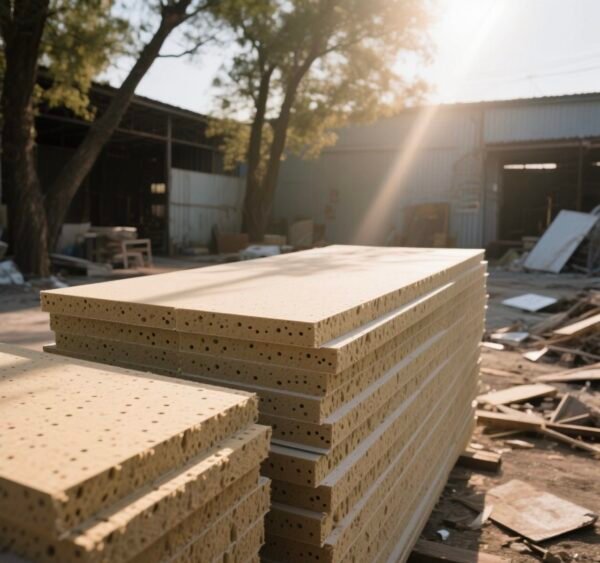Introduction: Beyond Insulation
Building insulation has long been valued for its ability to regulate indoor temperatures, reduce energy consumption, and enhance occupant comfort. But there is a hidden challenge few discuss:
Moisture trapped within insulation materials creates a breeding ground for bacteria,mold, and fungi.
These microbes degrade insulation performance, produce unpleasant odors, and, most importantly, pose health risks to building occupants. Integrating antimicrobial agents into insulation materials is a growing trend in construction innovation.
Step 1: Understanding the Problem
💧 Why Does Insulation Foster Microbial Growth?
Insulation materials such as fiberglass, mineral wool, and polymer foams can:
- Absorb or retain moisture from leaks, condensation, or humidity.
- Trap dust and organic debris that serve as nutrient sources for microbes.
- Provide stable, dark environments ideal for bacterial and fungal proliferation.
⚠️ Consequences Include:
- Reduced thermal efficiency due to material degradation.
- Musty odors affecting indoor air quality.
- Allergic reactions and respiratory issues among building occupants.
- Structural damage if mold spreads into adjoining materials.
Step 2: Selecting Effective Antimicrobial Agents
Choosing the right inorganic antimicrobial agent is crucial for insulation applications:
Silver (Ag)
- Action: Disrupts microbial DNA replication and damages cell membranes.
- Advantages: Highly effective at low concentrations, long-lasting, minimal impact on material properties.
- Applications: Common in premium insulation foams and panels for hospitals, hotels, and high-humidity facilities.
Copper (Cu)
- Action: Generates oxidative stress in microbial cells, leading to rapid destruction.
- Advantages: Broad-spectrum antimicrobial and antifungal effects, durable, and cost-effective compared to silver.
- Applications: Used in mineral wool and fiberglass insulation where mold prevention is critical.
Zinc (Zn)
- Action: Inhibits microbial enzyme systems and cell division.
- Advantages: Mild, safe, and effective when combined with silver or copper for synergistic performance.
- Applications: Suitable for large-scale residential insulation where safety and cost balance are priorities.
Step 3: Integrating Antimicrobial Agents into Insulation
🔬 How Is It Done?
- Masterbatch Preparation
Antimicrobial agents are first compounded into a masterbatch to ensure uniform dispersion. - Material Blending
The masterbatch is blended with base insulation materials (e.g. polyurethane foam resin) before extrusion or foaming. - Curing and Formation
During curing, agents become embedded within the polymer or fiber matrix, ensuring they remain active for the lifespan of the insulation. - Quality Testing
Finished products undergo microbial resistance testing, ensuring performance standards for bacterial and fungal inhibition are met.
Step 4: Regulatory and Safety Considerations
Compliance is non-negotiable. Manufacturers must ensure:
✅ Additive concentrations remain within safe exposure limits for humans.
✅ No harmful leaching occurs into indoor air or water systems.
✅ Products meet building material antimicrobial standards, such as ASTM and ISO certifications.
Step 5: Evaluating Benefits for Buildings
🏠 1. Improved Indoor Air Quality
Antimicrobial insulation reduces mold spores and bacterial growth, ensuring healthier breathing environments, especially in HVAC ducts and wall cavities.
🔥 2. Maintained Thermal Efficiency
Preventing microbial degradation preserves insulation structure and R-value, sustaining energy efficiency performance.
💰 3. Long-Term Cost Savings
Reduced need for remediation or replacement due to microbial damage lowers building maintenance costs.
🌱 4. Enhanced Sustainability Profile
Longer-lasting insulation means fewer replacements, supporting green building certifications and reducing environmental impact.
Step 6: Future Innovations
Researchers are developing:
- Nano-formulated silver-copper blends for maximum efficacy with minimal material usage.
- Bio-based antimicrobial additives to align with eco-friendly insulation production trends.
- Smart antimicrobial systems that respond to humidity changes, optimizing protection only when needed.
Final Thoughts
As buildings become smarter and healthier, integrating antimicrobial agents into insulation materials is a natural evolution. It ensures not only energy efficiency but also creates indoor spaces free from hidden microbial threats.
For architects, developers, and insulation manufacturers, adopting antimicrobial insulation represents leadership in building safety, performance, and occupant well-being.
✉️ Partner With Us
We provide silver, copper, and zinc-based antimicrobial solutions designed for insulation manufacturers. Contact our team to explore formulations that keep your materials clean, durable, and compliant.


-300x210.jpg)
